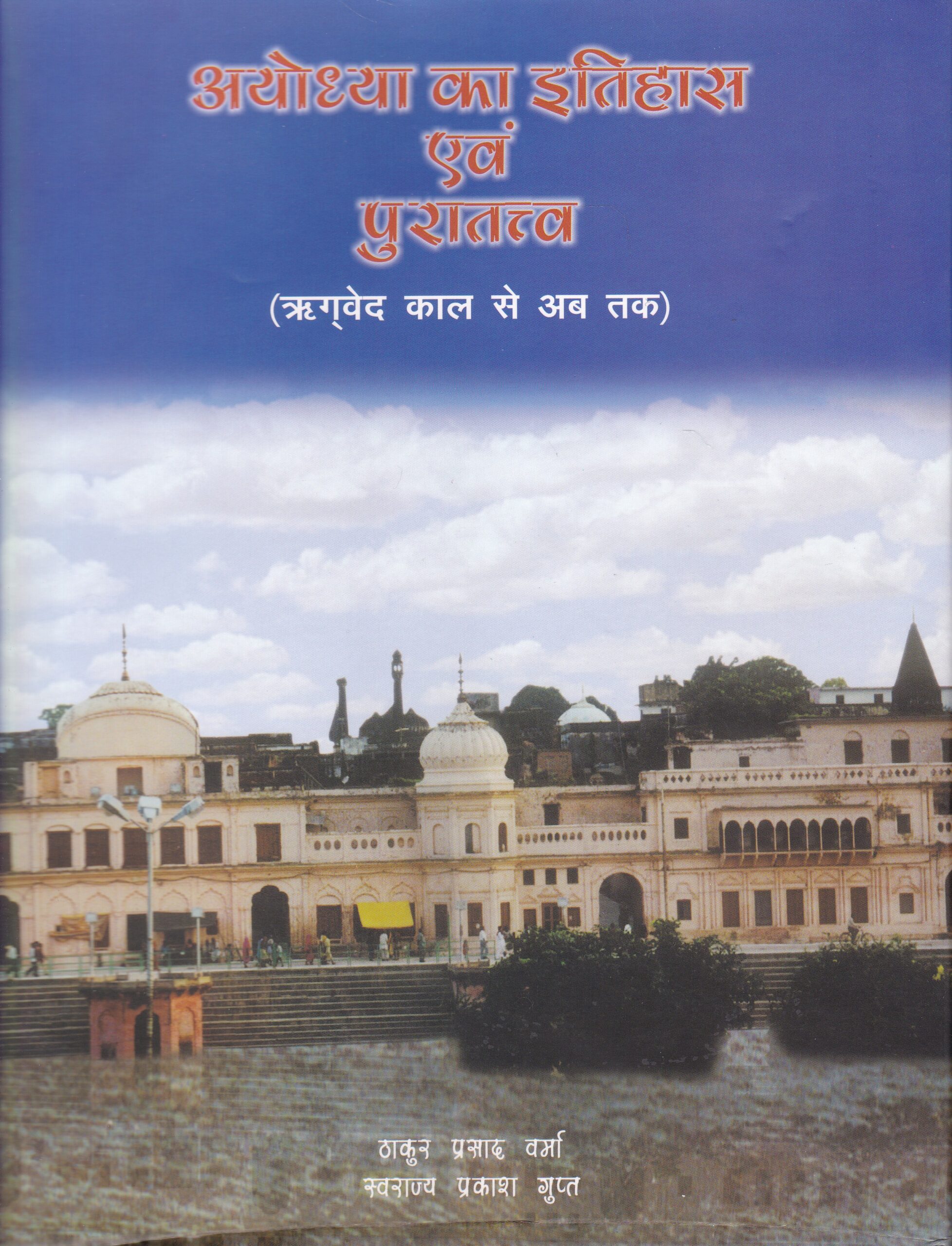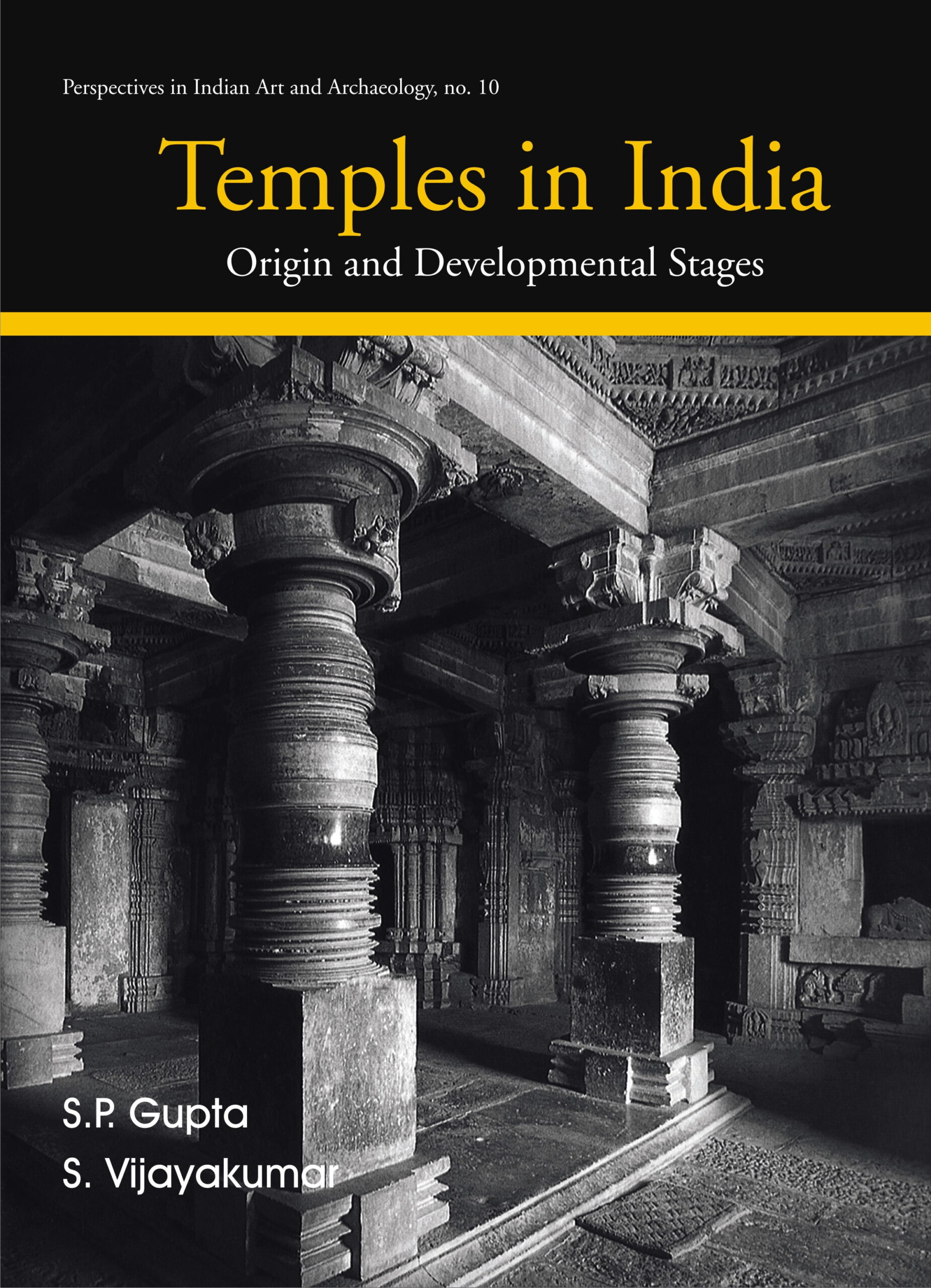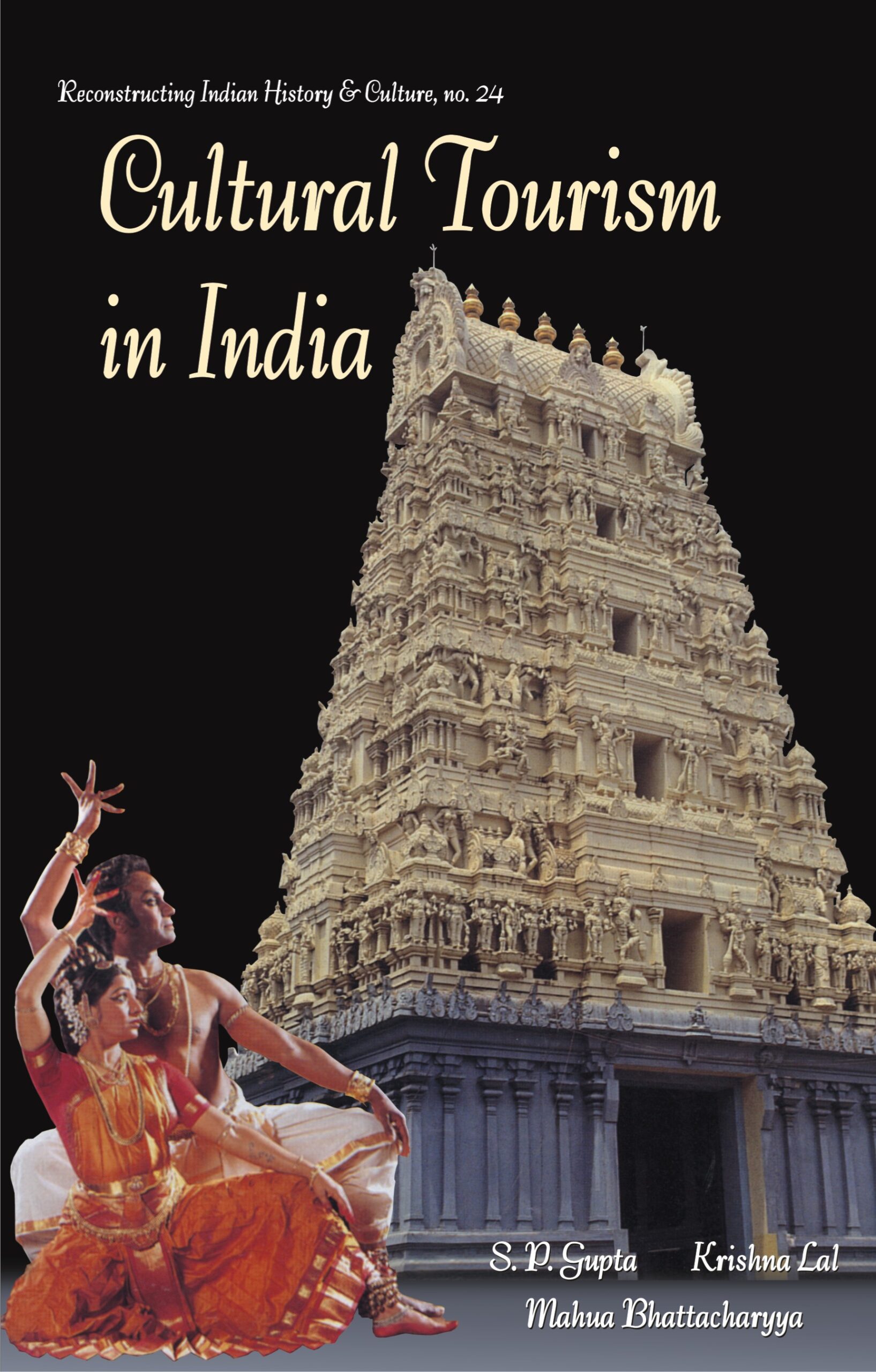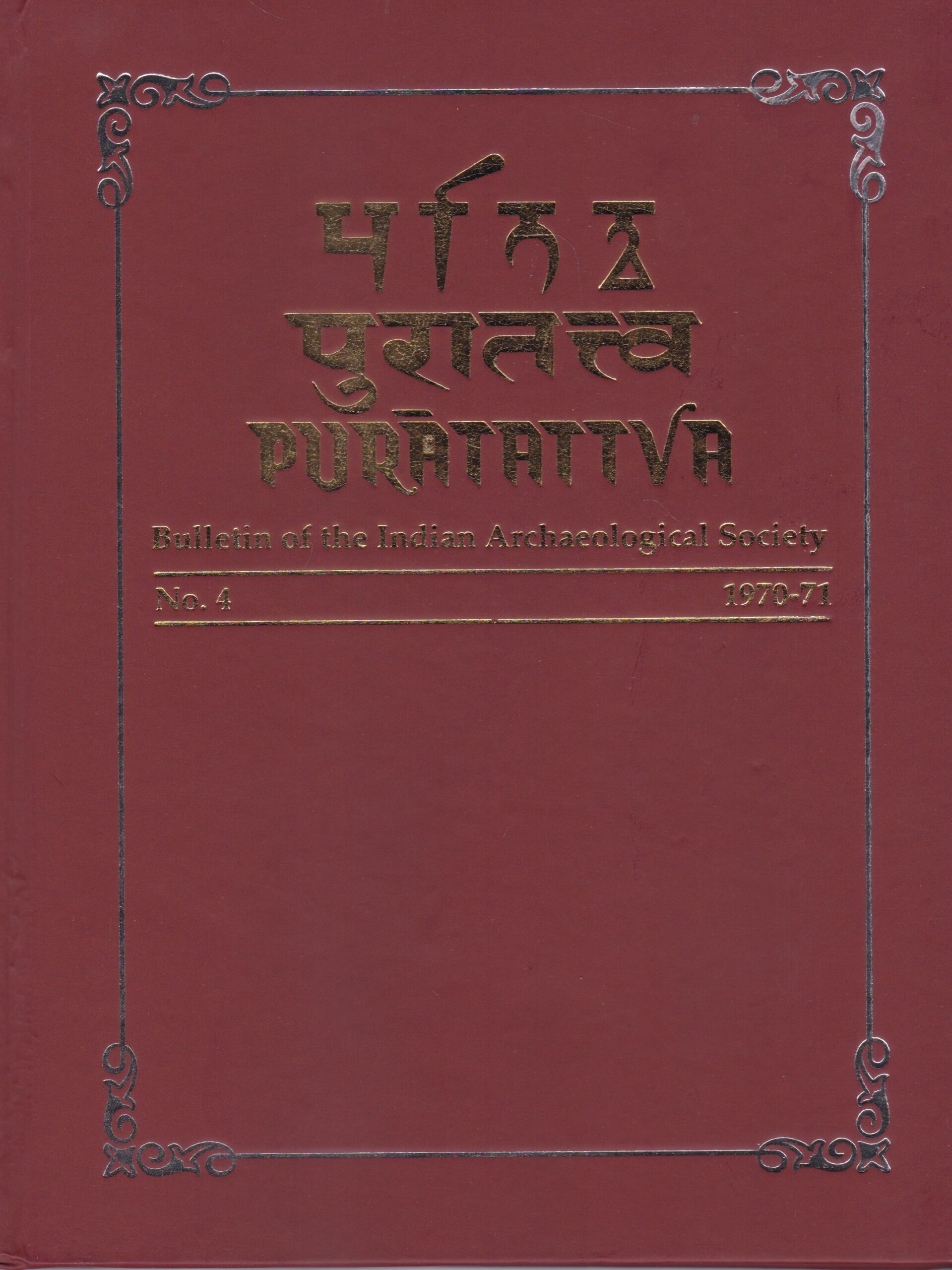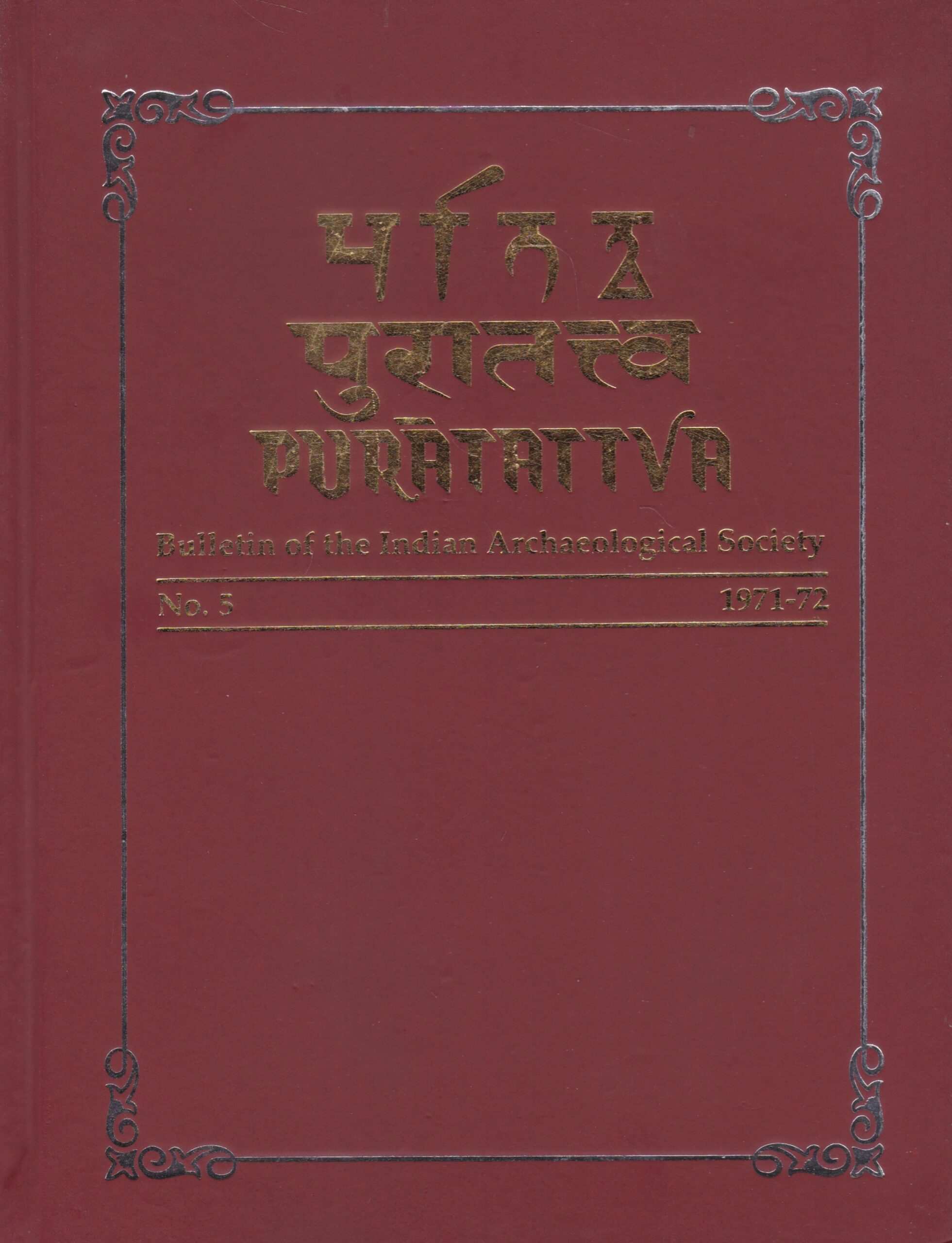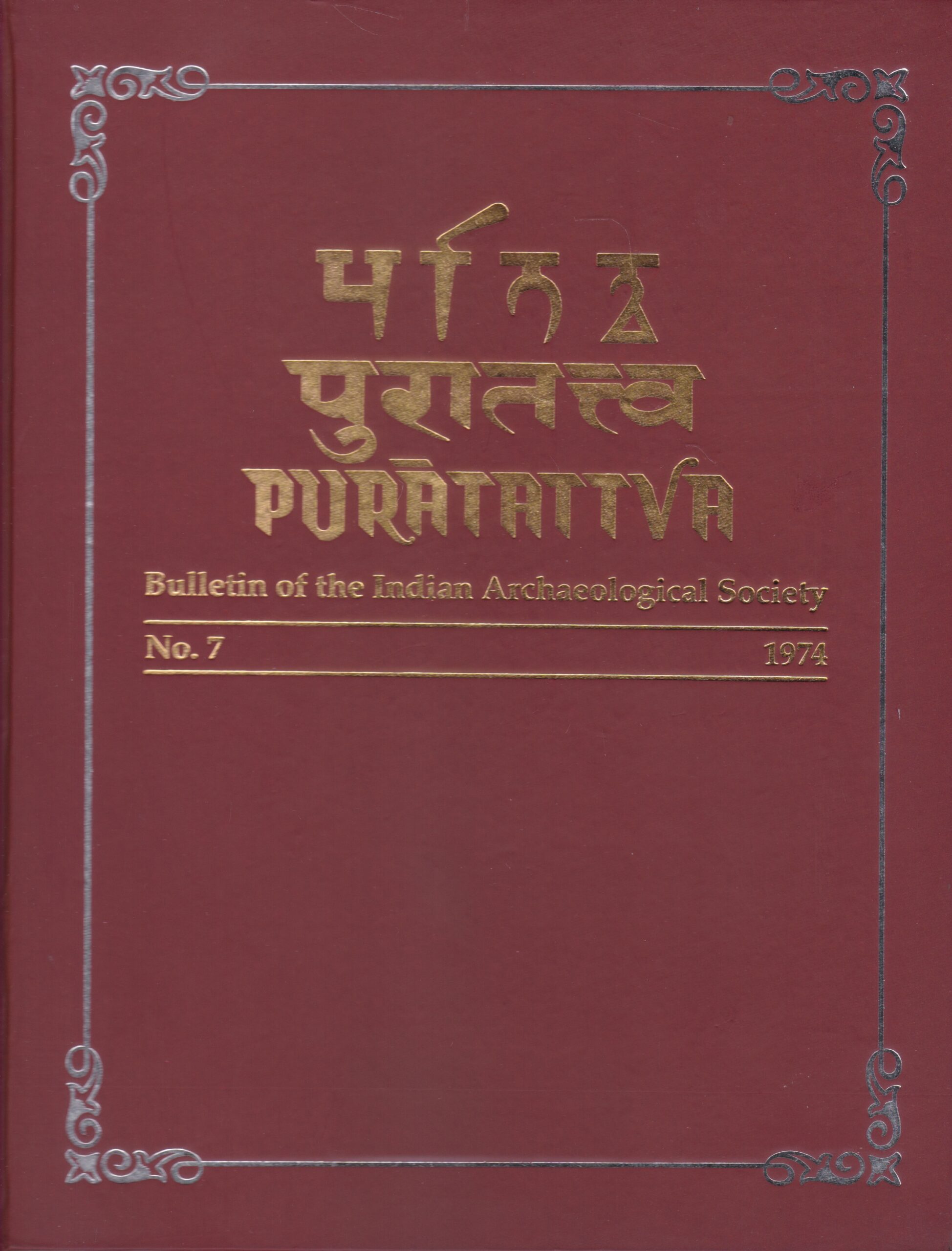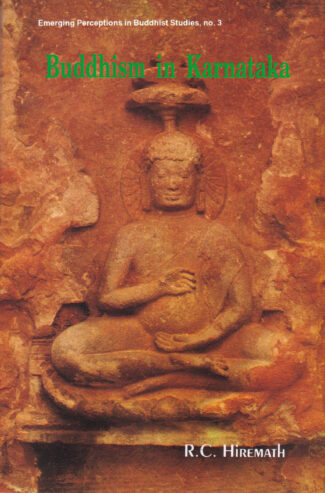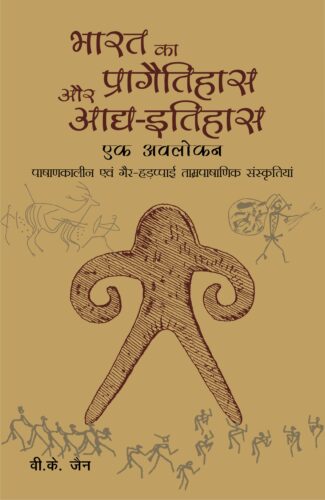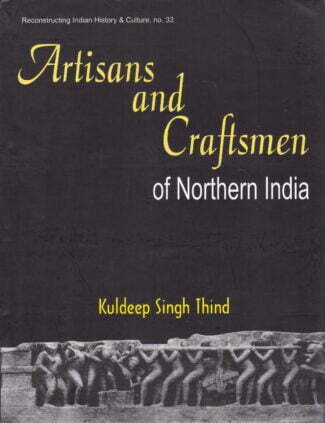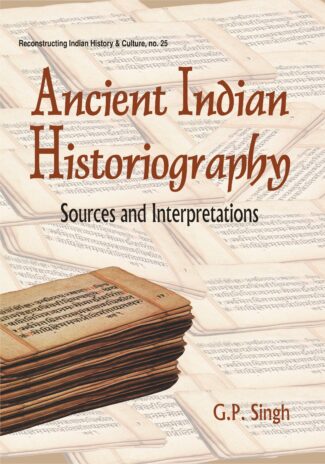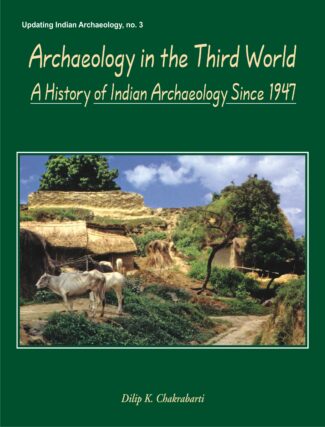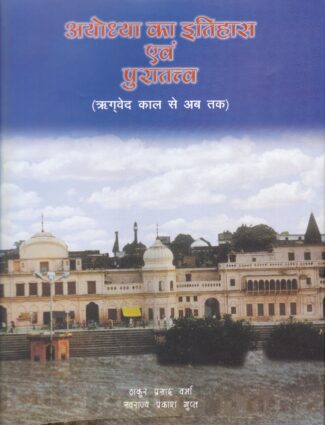
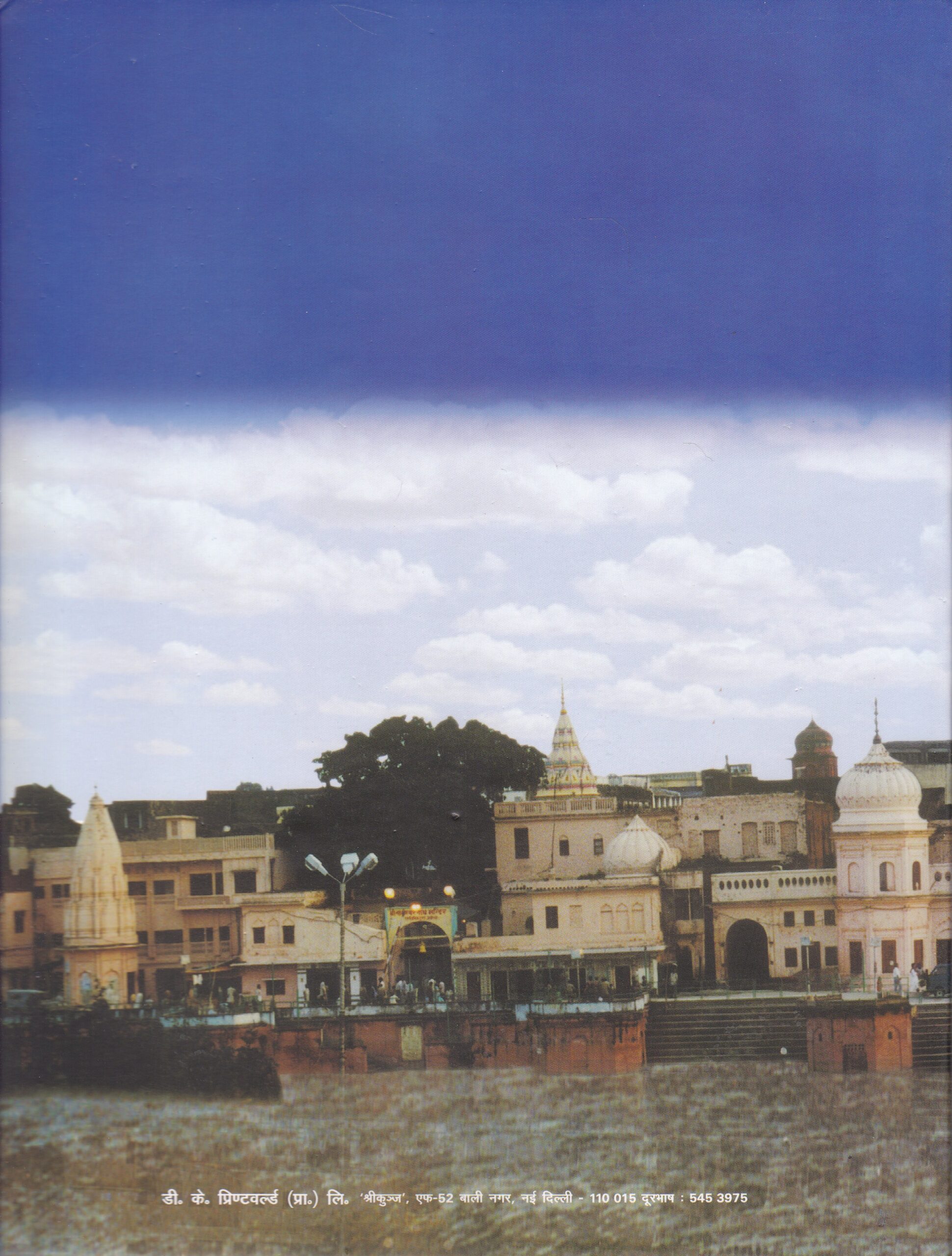
Ayodhya ka itihasa e...
Ayodhya ka itihasa evam puratattva Rgveda kala se aba taka
History and Archaeology of Ayodhya: From Rgveda Time Till Now by: Thakur Prasad Verma , S.P. GuptaT.P. Verma and S.P. Gupta, after several years toil, have here presented the history of Ayodhaya in a chronological form from Rgveda times till today which has been proved with the evidences from archaeology, coinages, scriptures, etc.
₹1,100.00 Original price was: ₹1,100.00.₹990.00Current price is: ₹990.00.
ISBN: 9788124601815
Year Of Publication: 2001
Edition: 1st
Pages : xxvii, 220
Bibliographic Details : 53 Col. & B/w photographs; 6 Maps; Bibliography; Index
Language : Hindi
Binding : Hardcover
Publisher: D.K. Printworld Pvt. Ltd.
Size: 29 cm.
Weight: 1100
T.P. Verma and S.P. Gupta, after several years toil, have here presented the history of Ayodhaya in a chronological form from Rgveda times till today which has been proved with the evidences from archaeology, coinages, scriptures, etc.
- Sale!Buddhism in Karnataka by: R.C. Hiremath
₹275.00Original price was: ₹275.00.₹248.00Current price is: ₹248.00.Dr. R.C. Hiremath examines the age-old story of Siddhartha Gautamas early life and renunciation, providing the reader with the background of the Shramana schools that did not accept the authority of the Vedas. He treats, with meticulous scholarship, the Hinayana and Mahayana forms of Buddhism, and establishes that, contrary to popular belief, these two forms were not antagonistic to each other. The author maintains that Buddhism had in fact entered Karnataka before the time of the Emperor Ashoka, and that it enjoyed its heyday between the third century BC. and the third century AD. He describes the organisation of the centres, assesses the standing of Buddhism as a living important religion of Karnataka, and accounts for its decay and departure to countries outside the land of its birth. He discusses the impact of the religion on the literature of Karnataka, of which little, that is authentic, is yet known. Based on the Ashokan edicts found in the region, which are claimed to have been the first writings in Karnataka, Dr. Hiremath goes further to infer that the Kannada script and literature have been derived from Buddhistic literature and philosophy. Supported with reports of archaeological excavations and foreign travellers, the study gives a fresh insight on an hitherto untapped area. With highly informative appendix giving Devanagari text, Roman transliteration and translation of the inscriptions found in Karnataka, extensive bibliographic references, and a glossary of non-English words/phrases, the book holds out an enduring appeal to both scholars and discerning readers.
- Sale!Bharat Ka Pragatihaas evam Adhya-Itihaas by: V.K. Jain
₹260.00Original price was: ₹260.00.₹234.00Current price is: ₹234.00.Fresh excavations, new dating techniques and ever-growing conceptual frameworks since 1950 have greatly reshaped our perspective on Prehistory and Protohistory of the Indian subcontinent. This monograph, which is primarily aimed to serve as a starter for the undergraduate and postgraduate students, presents, in a concise but comprehensive manner, a syncretic view of the latest information on various aspects such as tools and technologies, settlement and subsistence patterns, ecological background and distributional configuration in respect of the Stone Age and the Chalcolithic Cultures outside the Harappan Zone. The Megalithic Cultures of peninsular India and the Deccan too find a place in the book. A glossary of the terms used frequently in archaeology as well as maps, line-drawings and explanatory notes on individual sites add further value to the text.
- Sale!Artisans and Craftsmen of Northern India by: Kuldeep Singh Thind
₹1,100.00Original price was: ₹1,100.00.₹990.00Current price is: ₹990.00.The basic aim of the book is to expose the major contributions of artisans and craftsmen in portraying the society in different perspectives. These artisans and craftsmen, were drawn mostly from the shudras, lower caste of the community, suppressed and have-nots section of the society, but were highly talented. The work is also designed to create interest among the reader and scholars alike, to understand the society of the period under reference through the immortal art of these creative people. The artisans such as potters, weavers, carpenters, architects, sculptors, brick-makers, metallurgy and metal workers, leather workers, painters, and the workers engaged in the profession of ivory, glass and mirror, perfume and cosmetic, musical instrument, oil, salt and liquor makers, etc. were the heroes of that time, who not only met the day-to-day requirement of the then society, but also portrayed different aspects of their life, in its true color, through their workmanship. It was the architect who designed and constructed houses to live in, as well as water tank, well and channel, royal building, stupa, temple and fort, bridge, pillar and rock-edict etc., which met the need of the society.
Today, we feel proud of the rich heritage of old Indian art and architecture, credit for which solely goes to the then artisan who crafted immortal creations. However, the invaluable contribution made by the historians in immortalizing their creations, by putting them in black and white, is no less important. It is the historian, whose mighty pen has immortalized not only Ashoka the great, as a king but also the creators of the stupas of his times on equal footings. It is with this aim in view that the present book has been presented to the posterity, in order to pay rich tributes to the creators of our rich cultural heritage.
Unluckly there was no proper institutionalized provision for the education of artisans and craftsmen, so generally the former adopted the occupation of their parents and hereditary skill was enhances as it was transferred from father to son, and generation to generation. Contemporary sources reveal that the social stautus of artisan class was based on the nature and economic conditions of a particular profession. - Sale!Ancient Indian Historiography by: G.P. Singh
₹1,000.00Original price was: ₹1,000.00.₹900.00Current price is: ₹900.00.In ancient India, learning and literature flourished at different levels and concerned almost all broad disciplines of knowledge. One such stream was historiography as we find a rich tradition of history-writing maintained over the centuries. This book examines the evolution of the tradition of historiography from the Vedic times to the 12th century ad, arguing against an oft-held belief that ancient Indians lacked a sense of chronology and history. Here, Dr. G.P. Singh highlights the contributions of ancient India to historiography through a critical study of literary works authored by eminent scholars and writers of the past that contain historical writing. Based on research for over two decades, the work elaborately studies Vedic, Epic and Puranic traditions, Buddhist and Jain historiography, historical references and details in the dramas of Kalidasa and Visakhadatta, and historical writing in South India. It pays special attention to writing of historical biographies, chronicles and vamsavalis. It discusses how various religious and other texts throw light on the political and social fabric of different periods and their economic condition and cultural milieu. It frequently refers to the views of modern scholars on various aspects of the historical writings. It looks into the value of the historical writings, the historical conditions under which they were written and the purpose for which written, their language and style, and their immediate impact and influence on writing in later times.The volume will offer fresh approaches to studying ancient Indian historiography and new bases of research on the subject for historians and scholars.
- Sale!Archaeology in the Third World by: Dilip K. Chakrabarti
₹1,100.00Original price was: ₹1,100.00.₹990.00Current price is: ₹990.00.This book offers an authoritative historical frame of archaeological research in post-Independence India. It outlines the early evolution of the new Indias archaeological policy and the wide range of discoveries, which accompanied it. It shows how in the first flush of Independence archaeological research added new depths and dimensions to the ancient Indian past. It also looks closely at the tangled web of ideas behind this research, highlighting the major mile-posts in its story of development. At the same time it demonstrates with unerring clarity how the national archaeological policy of the 1950s and the 1960s has currently lost its direction. This is accompanied by an incisive analysis of different aspects of Indian heritage management, including the impact of religious fundamentalism, the looting of antiquities and the place of archaeology in Indian education. Finally, there is a detailed discussion on the scope of nationalist archaeology in India. One of the core arguments of the book is that the developments and features of post-Independence Indian archaeology may be representative of the archaeological scenario of the Third World as a whole. In fact, this is the first book to set down clearly the basic traits of Third World Archaeology and argue for its acceptance as a separate conceptual area in mainstream archaeology.


